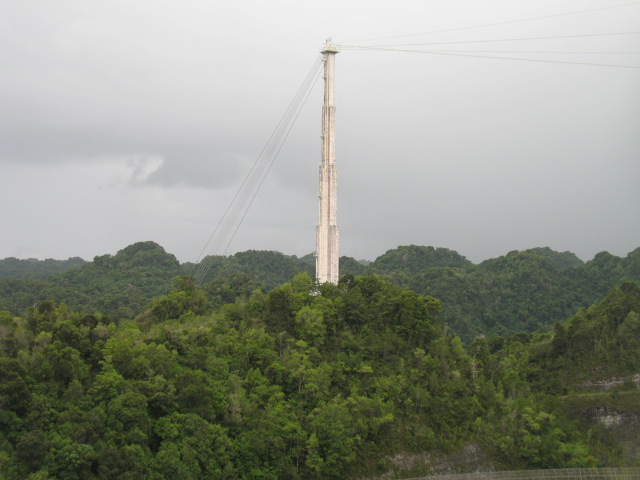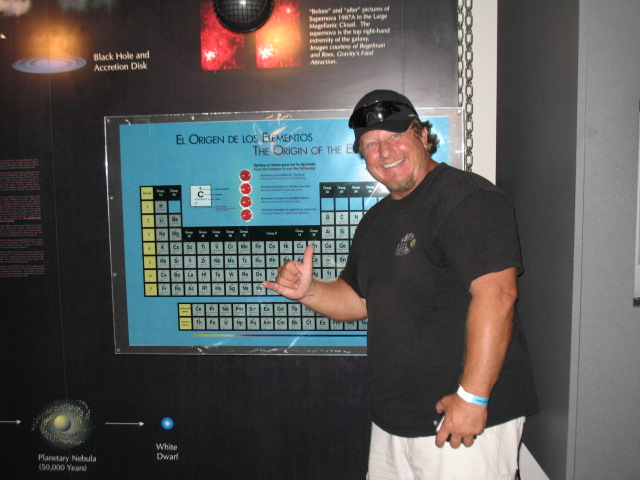Arecibo Observatory:
 |
| Arecibo Radiotelescope |
The largest radiotelescope in the world, the Arecibo Radiotelescope, sits in a karst
sinkhole that measures 1,300 feet across. The dish alone covers 20 acres and is used to explore the heavens.
The observatory is located deep in a very rural area of Arecibo. If the drive wasn't challenging enough with it's continuous hairpin turns on a straight up incline, you are met with a 10 minute hike from the parking lot up a straight incline of stairs to reach the ticket office and museum.
The price per ticket is $16. That did not fit in our cruising budget, but we didn't want to miss this. With Jim's background in engineering, we found it to be well worth the drive and the admission price. This marvel was a must see for us.

Grote Reber, the first Radio Astronomer, invented the radio telescope. Early on, he pursued it as a hobby and built a 31-foot parabolic antenna and made the first radio maps of the sky in 1937.
 |
| Grote Reber, The First Radio Astronomer |
A special "Reflector Shoe" is required to walk on the reflector panels to protect the panels by distributing a person's weight.
 |
|
Comprised of 38,778 aluminum panels, this is the largest
reflector on earth.
The reflector weighs 300 tons. |
The receiver is suspended by cables running between three reinforced concrete towers with their tops placed at the same elevation.
 |
| Concrete tower at a distance |
 |
| Close up of Platforms, Receiver, Gregorian Dome, Line Feed, and part of the Azimuth Arm |
 |
| Taking it all in |
39 steel cables are needed to support the 1,000 ton
platform. The combined cable length is 4
miles. Each cable strung between the tower and the
platform weighs 10 tons.
 |
| One of three concrete towers and anchor cables |
Norma is a constellation located in the southern hemisphere between Scorpius and Centaurus. Norma is the Latin word for "normal" and represents a carpenter's square, used in the Age of Exploration by carpenters on exploratory vessels.
 |
| Look Mom, you have your own constellation |
The Periodic Table
 |
| Jim in his "element" |
No comments:
Post a Comment